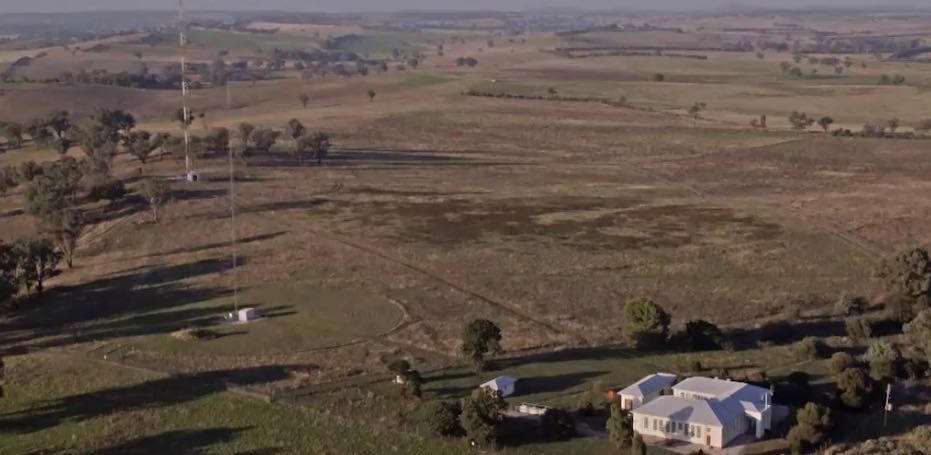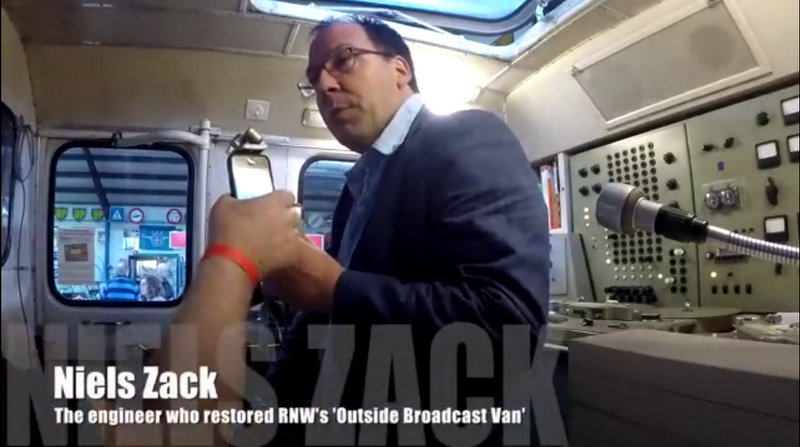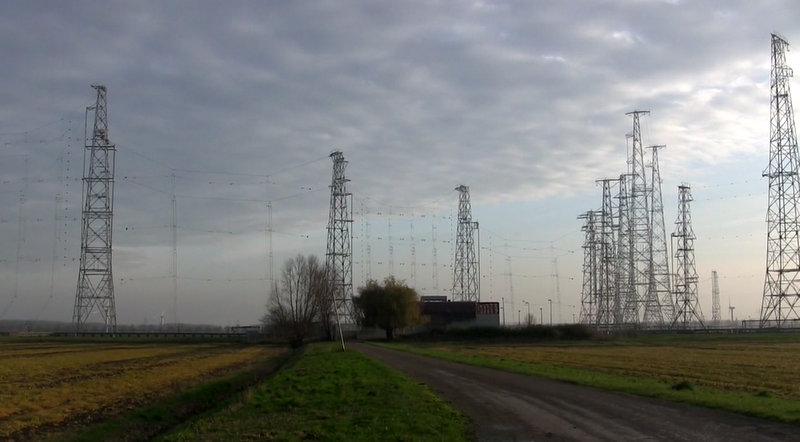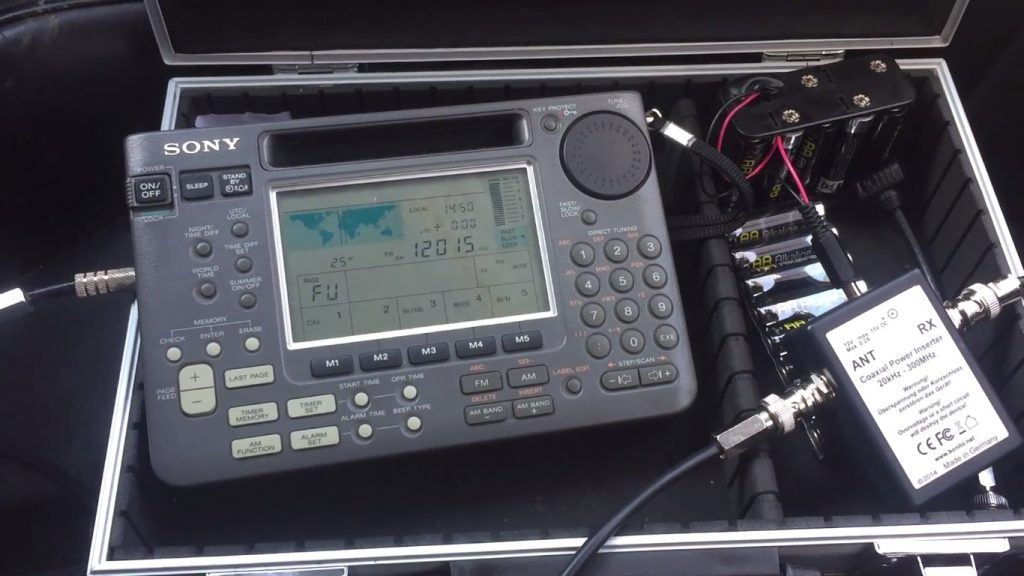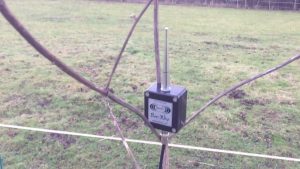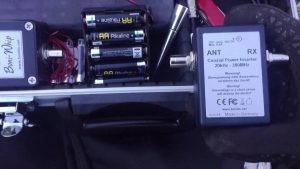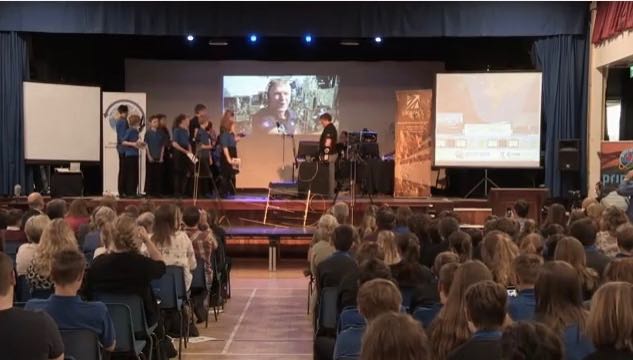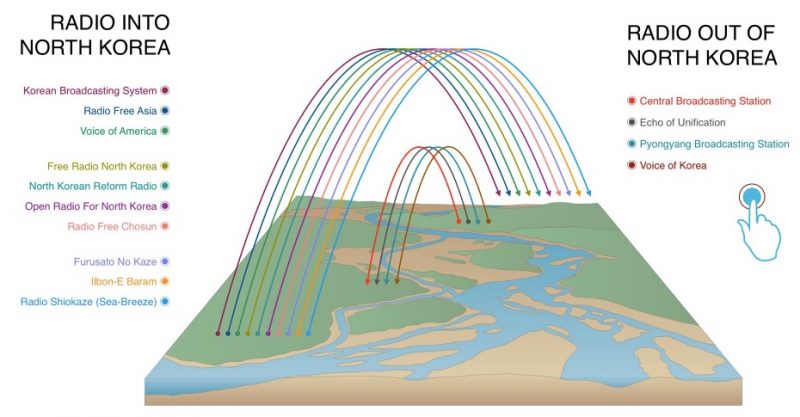Many thanks to SWLing Post contributor, Dave Porter (G4OYX), who shares a link to this excellent video tour of the ABC Central West radio transmitter in Cumnock, NSW, Australia.
Category Archives: Videos
Video: Tour of RNW operations van and interview with Niels Zack
ShortwaveService has uploaded the following video (to YouTube) which features the RNW Operations Van used in the recent 70th anniversary broadcast.
The video includes a tour of the van, the setup used in the 70th anniversary broadcast and an extended interview with Niels Zack, who restored the operations van:
Click here to view on YouTube.
I listened to at least an hour of the Saturday broadcast via the U Twente WebSDR. Sadly, I just discovered the audio dropped about 2 minutes into my recording.
Post readers: Anyone else listen to, record or simply log this anniversary broadcast? Please comment!
RNW: Video of Flevoland Shortwave station
Many thanks to SWLing Post contributor, Peter Veenendaal, who shares the following video and notes:
I am a former employee of Radio Netherlands Worldwide, which stopped broadcasting exactly 5 years ago next May.
Three years ago I made this short video of the Flevoland Shortwave station RNW used until 2007. It’s still there, idle and hoping for better times.
Click here to watch on Vimeo–All rights Peter Veenendaal.
Many thanks, Peter–most impressive! The magnitude of those curtain antennas is simply amazing. Thank you for sharing.
The Bonito Boni whip: proving to be excellent portable antenna for DXing
Hi there, if you’re a subscriber to the Oxford Shortwave Log YouTube channel, you will be aware that I have been using a Wellbrook ALA1530 H field antenna, for 15 months or so, with (at times) excellent results. A while back I was on the lookout for a second antenna, however at more than £250, I couldn’t justify purchasing a second Wellbrook. Ultimately I splashed out on the Bonito Boni whip E-field wideband active antenna (20 kHz to 300 MHz) and with a very compact form-factor suitable for DXpeditions/portable operation in general, the Boni whip definitely ticked all the boxes. Furthermore, with reasonable second and third order intercept points of +55 and +32.5 dBm respectively, the Boni whip, on paper at least, looked like a pretty good buy at around £100.
Initial testing at home confirmed, perhaps not surprisingly that the Boni whip could not match the SNR provided by the Wellbrook ALA1530 in a noisy, urban environment. However, less predictably, the Boni whip has proven to be a truly excellent antenna away from the ubiquitous blanket of ‘electrosmog’ at my QTH. Furthermore, it really is so compact, I simply leave it in the car in a small flight case, with a portable and connectors etc. for ad-hoc listening sessions. Since returning from my most recent trip to Brazil, I have had a chance to review my most recent catches with the Boni whip, some of which are realy pleasing and most definitely underline the excellent performance of this diminutive antenna. In particular, signals from Radio RB2 on 11935 kHz and Radio Aparecida on 11855 kHz, both low power Brazilian stations, are testament to how sensitive the Boni whip is in an electrically quiet environment. Check out also the quality of longwave signals from Poland and the Czech Republic – simply amazing for such a physically short antenna. Finally, there’s a personal first from Lusaka, Zambia, Voice of Hope Africa on 13680 kHz. All the more rewarding that this was actually copied in my work office!
I hope you found this article interesting. There are embedded reception videos below and text links for all, which will take you directly to the relevant video on the Oxford Shortwave Log YouTube channel. Thank you for reading/watching/listening and I wish you all excellent DX!
Click here to watch on YouTube
Click here to watch on YouTube
Click here to watch on YouTube
Click here to watch on YouTube
Click here to watch on YouTube
Click here to watch on YouTube
Click here to watch on YouTube
Click here to watch on YouTube
Clint Gouveia is the author of this post and a regular contributor to the SWLing Post. Clint actively publishes videos of his shortwave radio excursions on his YouTube channel: Oxford Shortwave Log. Clint is based in Oxfordshire, England.
TX Factor Episode 15
Many thanks to SWLing Post contributor, Thomas Ally, who notes that TX Factor have just published their 15th episode.
Here’s the episode description via TX Factor:
Bob gives a relaxed overview of the RS-BA1 remote control software for the Icom IC-7300. We meet two youngsters with a passion for amateur radio. And Mike and Bob head off to Bristol to spend a day with some very enthusiastic members of the British Amateur Television Club to learn all about digital amateur television.
Icom RS-BA1: Setting up the IC-7300 for remote operation
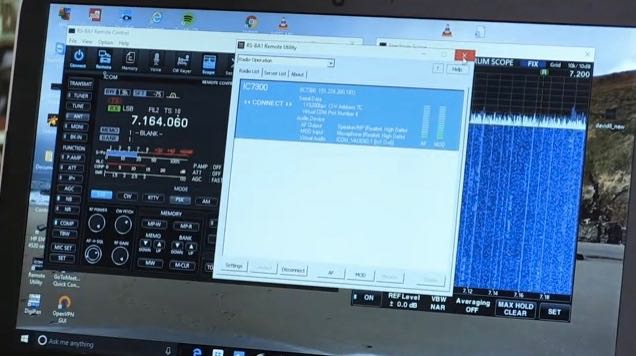 (Source: Southgate ARC and Dave Zantow)
(Source: Southgate ARC and Dave Zantow)
New video: Icom RS-BA1. Installing & setting-up remote control for your IC-7300
The TX Factor have produced a video that logically goes through the step by step process of remote controlling an Icom Amateur radio, more specifically in this case, the IC-7300 using the RS-BA1 remote control software.
The video shows Bob McCreadie (G0FGX) of TX Films demonstrating:
• Setting up your computer and radio
• Installing the RS-BA1 remote control software
• Accessing the IC-7300 remotely
• Introduction to the RC-28 remote controller encoder.
To view this video visit:
Icom RS-BA1. Installing & Setting up Remote Control for your IC-7300 SDR RadioTo found out more about Icom’s remote control software, visit the
RC-28 IP Remote Control System page where you will also find a list of compatible Icom HF radios.For more information about the IC-7300 visit the
IC-7300 HF/50/70MHz Transceiver product page.Both the RC-28 IP Remote Control System and IC-7300 are available from all authorised Icom Amateur radio dealers.
Of course, you could use the RS-BA1software to use the Icom IC-7300 as a remote shortwave receiver. Click here to read our review of the IC-7300.
North Korea: Information Gathering in the World’s Most Restrictive Nation
If you’ve been an SWLing Post reader for long, you’ll have “met” him virtually; if you’ve been in attendance the Winter SWL Fest recently, you’ll recognize him, may have heard him speak, and perhaps even have met him in person. I’m speaking, of course, of my good friend, Post contributor, and fellow radio listener, Mark Fahey.
What you might not know about Mark, an intrepid Aussie and mediahound of remarkable facility and clarity, is that he has spent many years (and significant personal resources) compiling a fascinating and invaluable multi-media project in the form of an iBook he’s titled Behind The Curtain, which allows outsiders a frank view directly into North Korean propaganda.
What’s astounding is that this view is from within North Korea: Mark, having traveled to North Korea numerous times (until he made his research public, that is, thus limiting his re-entry), successfully rips back North Korea’s curtain of self-image to reveal, in all its stultified glory, the inner workings––and failings––of the”Hermit Kingdom.”
He’s now very near to publishing Behind The Curtain, and he’s making available the iBook––as well as all of the media and research he’s curated––for free.
HOPE X
During the summer of 2014 Mark ventured to New York City to present his research at HOPE X (Hackers On Planet Earth). Yesterday, I rediscovered the video of Mark’s presentation at HOPE X on YouTube. If you’re interested in North Korea, propaganda, number stations, SDRs, and/or anthropology of any stripe, you’ll certainly enjoy this presentation, which is truly like no other:
Click here to view on YouTube.
Intrigued? So am I!
Behind The Curtain doesn’t yet have a formal release date, but stay tuned to the Post for details about its availability, as well as any other presentations or projects on this (or any other subject!) by Mark.
Download Behind The Curtain from the Apple store by clicking here.

